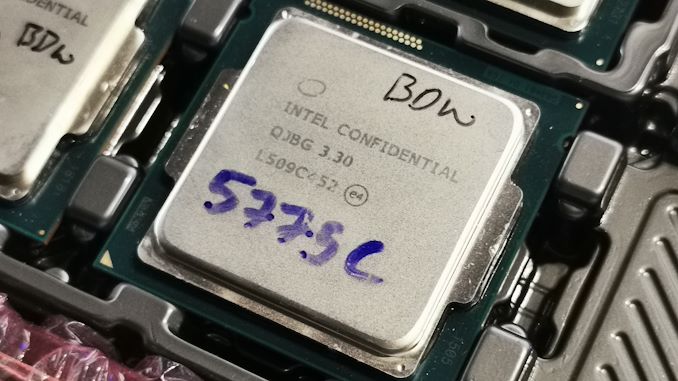- Joined
- Mar 13, 2021
- Messages
- 609 (0.38/day)
| Processor | AMD 7600x |
|---|---|
| Motherboard | Asrock x670e Steel Legend |
| Cooling | Silver Arrow Extreme IBe Rev B with 2x 120 Gentle Typhoons |
| Memory | 4x16Gb Patriot Viper Non RGB @ 6000 30-36-36-36-40 |
| Video Card(s) | XFX 6950XT MERC 319 |
| Storage | 2x Crucial P5 Plus 1Tb NVME |
| Display(s) | 3x Dell Ultrasharp U2414h |
| Case | Coolermaster Stacker 832 |
| Power Supply | Thermaltake Toughpower PF3 850 watt |
| Mouse | Logitech G502 (OG) |
| Keyboard | Logitech G512 |
So reading the 1st post here is my take
SMT was that tool that suited the mantra "perfection is the enemy of good enough". By using SMT they were able to utilise an "imperfect" core design for certain tasks but still perform admirably across a wide breadth of tasks
Never going to see it as from a business perspective as it makes 0 sense. Your spinning a completely bespoke design for a market around 2% of the PC market that arent even people who spend big on these parts either. I would love to see it as I can imagine a pure P core design with limited graphics etc similar to AMDs IO Die output would be a really interesting proposition.

 www.statista.com
www.statista.com
- Datacenter - We have NO way of competing in the short/mid term against AMD and ARM without the use of SMT. The security concerns around SMT are outweighed by the performance deficit we would be left in without it.
- Client - No changes in inital architecture/plans but that leads to
- Longterm plans - New architectures are required and we cant just keep iterating on current ones. ALL new designs have to be reviewed and approved by me before going to actual hardware testing.
Which is wrong as HT actually adds a small amount to the die area per core due to the more complicated front end required.Hyper-threading is a crutch and is usually there to maximize profits by allowing for simpler and smaller cores
And you can argue the same point about having a core desinged focusing on any single task load. Having something that is purely focused on Database may not be ideal for someone doing scientific work and the one designed for scientific work will be imbalanced for gaming etc. For example. how many games are really taking advantage of AVX512 instructions and even the lower versions. How impacted would scientific work be in a core without any of those instructions.What "job" are you talking about? Be specific. If you look on the broad spectrum of normal PC users, how many people could benefit from it and in what extent?
SMT was that tool that suited the mantra "perfection is the enemy of good enough". By using SMT they were able to utilise an "imperfect" core design for certain tasks but still perform admirably across a wide breadth of tasks
It's odd how Intel hasn't made GAMING processor with just big cores and crap load of cache. Surely their new approach can just glue whatever together with tiles...
Never going to see it as from a business perspective as it makes 0 sense. Your spinning a completely bespoke design for a market around 2% of the PC market that arent even people who spend big on these parts either. I would love to see it as I can imagine a pure P core design with limited graphics etc similar to AMDs IO Die output would be a really interesting proposition.

Gaming PCs & Laptops - Worldwide | Statista Market Forecast
Worldwide: Revenue in the Gaming PCs & Laptops market worldwide is projected to reach US$62.36bn in 2025. Definition: The market for gaming PCs and laptops encompasses a dynamic range of specialized computing devices tailored to deliver optimal gaming performance.









